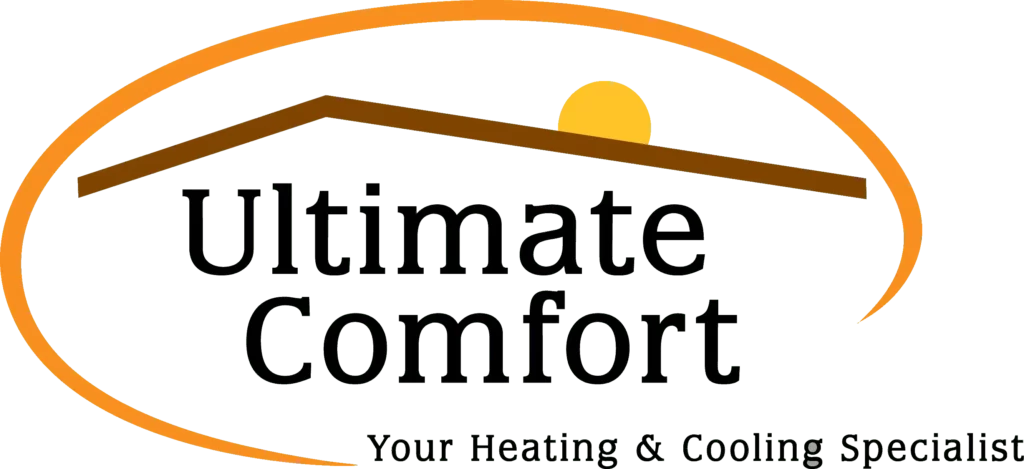In the winter, your furnace is your ally in keeping warm. It works all season long to ensure you’re nice and toasty. So, when to consider buying a new furnace?
When you run it more often, or if it just… seems… off, you might be concerned about whether you need a replacement. Here’s what to look for.
Signs of a Failing Furnace – When to Consider Buying a New Furnace
- Consistently High Energy BillsA primary sign indicating it’s time to consider buying a new furnace is consistently high energy bills. If you’ve noticed a sudden increase in your energy costs without any change in your usage patterns, it is likely that your furnace is not running efficiently. As furnaces age, they lose efficiency and require more energy to produce the same heat. This leads to higher heating costs for your home or business.When your furnace isn’t running efficiently, it may have to work harder and for more extended periods to reach and maintain the desired temperature. This consumes more energy and puts additional strain on the system, increasing the likelihood of breakdowns and the need for repairs. By investing in a new furnace, you can benefit from the latest energy-efficient technology, which will reduce your energy bills and contribute to a smaller carbon footprint.
- Frequent RepairsIf you call for HVAC services more frequently to repair your furnace, it may be a sign that your current unit is nearing the end of its lifespan. While occasional repairs are regular, persistent breakdowns and constant repairs can quickly become costly and inconvenient. Additionally, the costs of repairs can add up over time, making it more cost-effective to replace the furnace altogether.An aging furnace is more prone to component failures resulting from wear and tear. Often, these repairs are temporary fixes and don’t address the underlying issues. Investing in a new furnace eliminates frequent repairs and provides peace of mind, knowing you won’t experience any unexpected breakdowns during the cold winter.
- Uneven HeatingInconsistent temperature throughout your home or building is another common sign of a failing furnace. As furnaces age, they may struggle to distribute heat evenly, leaving some areas too warm while others remain cold. This can lead to discomfort and frustration, as you constantly have to adjust the thermostat to try and attain a comfortable temperature.Various factors, including clogged ducts, faulty thermostats, or worn-out components, can cause uneven heating. However, when it becomes a recurring issue, it’s often a sign that your furnace can no longer effectively distribute heat throughout your space. Upgrading to a new furnace with improved airflow capabilities can help ensure consistent heating in every room, providing a comfortable environment for everyone inside.
- Excessive NoiseUnusual and excessive noises from your furnace during operation can indicate underlying problems. While some noise is normal, loud rattling, banging, or screeching sounds shouldn’t be ignored. These noises can indicate worn-out components, a malfunctioning blower motor, or an unbalanced blower wheel. The longer you ignore these signs, the higher the risk of a complete furnace failure.Excessive noise disrupts your daily life and can indicate that your furnace is in an advanced state of disrepair. Contacting an HVAC professional to assess the extent of the issue is crucial to determining whether a furnace replacement is necessary. A new, modern furnace will operate more quietly, ensuring a peaceful and comfortable atmosphere in your home or business.
Furnace Replacement: What to Look For
- Furnace LifespanUnderstanding the average lifespan of a furnace is essential when considering a replacement. On average, furnaces can last anywhere from 15 to 20 years. If your furnace is approaching or exceeding this age range, it’s a good indicator that it is time to start considering a replacement.As furnaces age, they become less reliable, less energy-efficient, and more prone to breakdowns. By replacing your furnace before it reaches the end of its lifespan, you can avoid unexpected heating issues and ensure consistent comfort throughout the year. Regular maintenance and check-ups can help extend the lifespan of your furnace, but it’s essential to prepare for a replacement when the time comes.
- Energy EfficiencyWhen selecting a new furnace, energy efficiency should be a top priority. Look for models with a high Annual Fuel Utilization Efficiency (AFUE) rating. The AFUE rating indicates how efficiently the furnace converts fuel into heat. The higher the AFUE rating, the more efficiently the stove utilizes power, resulting in lower energy consumption and reduced heating costs.Investing in an energy-efficient furnace helps you save money on your energy bills and reduces your carbon footprint. You’ll enjoy the comfort of a well-heated space while being environmentally conscious. Additionally, many high-efficiency furnaces may qualify for government rebates or incentives, providing additional savings.
- Proper SizingChoosing the right size of the furnace is crucial for optimal performance and energy efficiency. An improperly sized furnace can lead to various issues. A too-small furnace will struggle to keep your home or building warm, increasing energy consumption and higher bills. On the other hand, an oversized furnace will frequently cycle on and off, leading to increased wear and tear, inefficient heating, and wasted energy.To determine the proper size of a furnace for your space, it’s essential to consult with an HVAC professional. They will consider factors such as the square footage of your building, insulation levels, number of windows, and climate conditions in your area. Their expertise will help you select the right furnace size that will efficiently meet your heating needs.
Buy a New Furnace on Time
Recognizing the signs that indicate it’s time to replace your furnace is essential for maintaining a comfortable and efficient heating system. Be on the lookout for consistently high energy bills, frequent repairs, uneven heating, and excessive noise emanating from your furnace. Don’t wait until your furnace fails and leaves you cold. Investing in a new furnace can benefit from improved energy efficiency, better heat distribution, and peace of mind, knowing you won’t be faced with unexpected breakdowns.
Consider the average lifespan, prioritize energy efficiency, and ensure proper sizing when considering a furnace replacement. Upgrading to a modern, energy-efficient furnace will provide consistent comfort and help you save on energy bills in the long run. Visit our website and consult an HVAC professional to guide you through the furnace replacement process and ensure you select the best furnace for your home or business. Take action now and enjoy a warm and comfortable environment for years.


